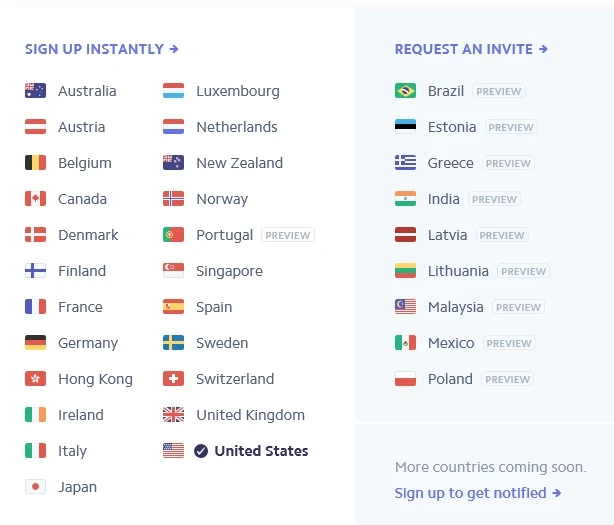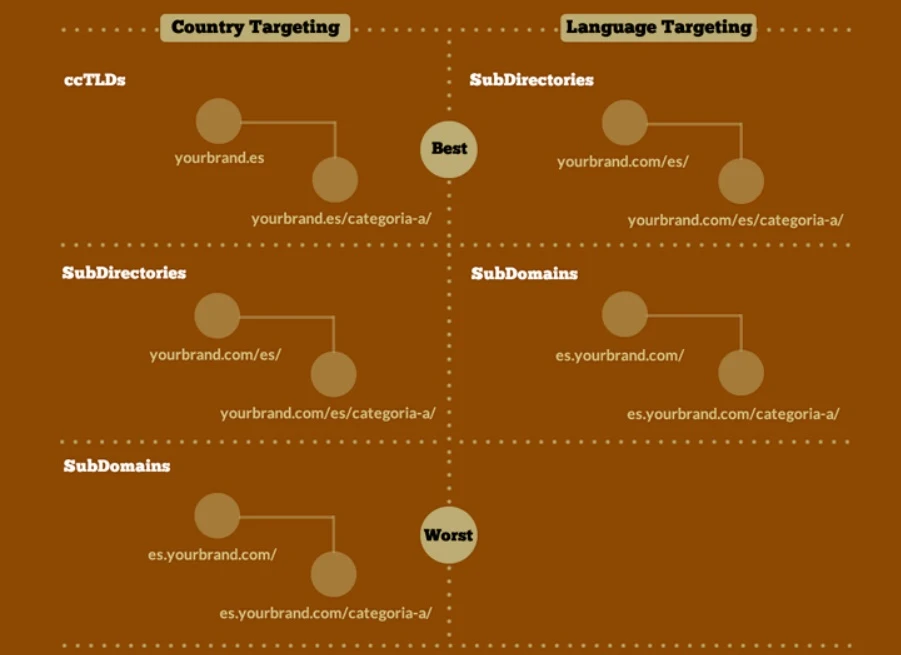The Ultimate Guide to Multilingual SEO

Expanding Your Business with Multilingual SEO
Scaling your business in today’s marketplace means expanding into foreign markets. And that means expanded SEO efforts as well if you intend to be found by those local consumers.

There are approximately 378 million native English-speakers in the world. Another 611 million speak it as a second language or have a small grasp of phrases and such. All in all, this represents about 13% of the world’s population. And there are some who predict that, by 2050, this percentage will decline to 5%.
If you intend to expand into foreign markets, and that intention does need to be “on your plate,” you have some work to do. Consider just the report from Brookings that states that middle-class growth in developed countries is projected to grow at about 0.05% - 1% annually, but the middle class in developing countries could grow at an annual rate of 6%, or more.
Not the least important aspect of moving into global markets and capturing a market share is multilingual SEO. If you are going to be “found” by these newer members of a consumer middle class, and gain their patronization, then you have to be sure that you do all you can to get yourself noticed using global SEO strategies.
The Basics of SEO
You are not a rookie about SEO. You know the drill – finding the right long-tail keywords, building links, etc. But your focus has been in your native language to consumers who search in that native language. Now it is time to expand your horizons and look to multilingual SEO.
Benefits of Multilingual SEO
All of us living in the U.S. and engaging in online shopping have certainly made purchases from foreign companies. This has been an easy process because they have a website in English, and we can pay in U.S. currency. And if we like the products, we’ll go back and purchase more. Many times, we are even unaware that we are purchasing from a company that is halfway around the world from us. So, why shouldn’t you do the same with your website – the benefits are obvious:
- Increased traffic as consumers conduct searches in their native languages. Only about one-fifth of traffic on the Internet comes from the U.S., for example. A U.S. company that has popular products at home is missing out on a huge amount of traffic by not going multilingual.
- Better user experience = more time spent on a site = greater chance of conversions = better SERP ranking
- Great SEO. If your site is optimized for key search terms in the target languages, is engaging and providing value to those audiences, SEO rankings on localized search engines will rise.
Guidelines for Multilingual SEO
There are several steps involved here, and you should proceed with caution and deliberation.
Step 1: Develop a Strategy
- Decide whether you need international SEO or not. If you do not see a lot of traffic coming from other countries or regions, you may want to wait. On the other hand, if you have done your research and know that you have a market for your product/service in another country or region, then international SEO should be considered.
- Identify the countries from which segments of your customers come from, other than your own. You may have been selling on Amazon, and you can get that data there. Or, if not, check out Google Analytics – go to the “audience” link on the main dashboard, then on “Geo” from the drop-down menu. This will give you the languages your audience uses, as well as the countries and regions they are from.
- Decide whether you need international SEO or not. If you do not see a lot of traffic coming from other countries or regions, you may want to wait. On the other hand, if you have done your research and know that you have a market for your product/service in another country or region, then international SEO should be considered.
Step 2: Decide to Target Countries, Languages, or Both
Understand that you really cannot target regions, such as Southeast Asia or Europe. There are simply too many languages involved. It’s either countries or languages or both.
- Targeting Countries: Some companies target specific countries because they have reason to. Consider a hotel chain like Marriott or a travel site like Expedia. It makes sense for them to have global sites in numerous countries, because they have so many customers with different needs in each of these. And it also makes sense for them to offer multiple languages on their main sites as well.
- Targeting Languages: But for most companies whose products or services are the same no matter where they are, the language option only is a better choice. Consider that Facebook, which offers the same services to users around the world, offers languages rather than separate sites by country.
- Targeting Both: Sometimes, it makes sense for a company to target both countries and languages. Stripe, an online payment venue, has a need to target both because it serves only certain countries and yet wants to serve all languages in those countries. So, a user can choose a country and then can select from languages as well. So, in the United States, for example, where there are multiple languages, the country and then several language options can be selected.

This works well for Stripe and also for online banking enterprises that are spreading their presences into developing countries in which a growing middle class is still unbanked. Thus, users can use their country page and have it in their own language as well.
Step 3: Select Domain and URL Structure
This may sound a bit simple at first, but, in fact, it is not, and you have choices to make.
- You can use Country Code Top Domains (ccTLD’s), such as .ca or .co.uk if you are targeting countries as opposed to languages, or subdirectories, such as XXX.com/de
- If you are targeting languages, then you will want to use SubDirectories, such as XXX.com/de or SubDomains, such as de/XXX.com/
Here is a great infographic from Moz that explains your options:

Again, if your site is large and your offerings are different based upon country, then you will want to target specific countries with ccTLD’s. If, however, your targets are consumers based upon their languages anywhere they might be, then you will want to use SubDirectories, as shown above.
Step 4: Set Up Languages for SEO
This is a critical factor in SEO – if the translations and localizations are not done well, you will confuse and possibly offend.
-
Use only human translators. If you can find a native speaker in your target language, who can also advise you on appropriate cultural considerations, great. You can find individual translators on freelance sites like Upwork. If you intend to translate into more than one language, though, then go to a reputable, large translation agency, such as The Word Point, as they will have native-speaking translators in almost any language you choose.
Google Translate is another option because it is free; however, you will get literal translations, no localization, and your target audiences will be reading a poor translation, not to mention the fact that your images may be offensive, and your keywords may be meaningless in those languages.
-
Consider creating a sitemap in the target language for the translated website. It helps users navigate and keeps them happier. Happy users = more time spent on your site, important for SEO purposes. And it helps search engines correctly index your pages.
-
Use hreflang. This attribute tells search engines that you actually have the same content, images, etc. in different languages so that they are not picking this all up as duplicate content on the same website (something they don’t like). Hreflang tags will tell search engines that you have actually created different versions of the same content for different languages. It will help that search engine serve up the right language for searchers and, as well, recognize that you are not just providing duplicate content. If your site is in WordPress, you can achieve this easily through Yoast.
-
Provide language menus on your website. Don’t use countries as options. In India, for example, there are 41 languages; in China, there are four that are officially recognized. And as you provide those language options, use the recognized spelling of that language. For example, instead of “Spanish,” use “Espanol.”
-
A word about keywords: as you translate to target languages, a key factor will be the use of the right keywords/keyword phrases that are popular for searches in those languages. Again, here is where a human native translator can be invaluable. Otherwise, you will find yourself doing a large amount of research, and the results may be defective.
Step 5: Keep Housekeeping Issues in Mind
- Setting up different currencies for whoever you are using as a payment processor is not difficult. But you need to select the right currencies for an audience that may be accessing your site from many different countries. This requires a bit of research. For example, there may be French-speaking consumers accessing your site from Canada, France, or Algiers. They should be able to select their native currency.
- The same goes for shipping. Choose an international shipper that will deliver in all of the countries/regions that use the target language.
- Be thoughtful about images. Obviously, you will not be using women in scantily-clad bikinis for languages that are commonly found in Muslim countries. And you may not want to use pictures of people wearing white in China – it is a color of mourning, not for brides and purity. Here’s where a localization expert comes into play.
Common Mistakes to Avoid
This guide is meant to give you the basics of setting up multilingual sites that will enhance your SEO for searchers in foreign languages. As you go through this process, keep in mind that mistakes can thwart all of your efforts:
- Before you target a language that is common in certain countries and/or regions, make certain that you are not violating any local laws or regulations. For example, new regulations in European countries require notification of the use of cookies. If your target language is French, you must comply with this regulation, because a lot of your customer will reside in France.
- Don’t assume anything regarding language nuances, cultural values, keywords, etc. Get a native expert to review everything. The American Dairy Association loved its slogan, “Got milk?” But when it was translated into Spanish, it meant, “Are you lactating?”

- Don’t confuse search engines by making them think you are duplicating content. Use those hreflang tags to inform them that your pages are separate for languages.
- Don’t target countries when you should be targeting languages instead. Unless you are offering different products/services to consumers in different countries, you should be targeting languages instead.
- Do your homework regarding keywords/phrases. Get professional help or be willing to do the research yourself. Simply translating keywords from your native site is a huge mistake.
Final Thoughts
You have a lot of work to do. But none of it is insurmountable if you put a plan in place and follow some logical steps.
- First, do your research and make sure that you have a foreign audience.
- Second, determine whether you need to target countries, languages, or both, and use the infographic above for domain and URL structure.
- Third, get expert advice from natives of those languages/countries as you develop your localization strategies.
- Fourth, be willing to do the research or find experts who can provide the keywords/phrases that are SEO friendly in the languages you are targeting.
- Fifth, get all of those housekeeping issues in order.
This guide to multilingual SEO should get you started. As you dip your toes into these waters of multilingual SEO, you will learn from your experiences, make improvements and modifications, and ultimately become a master of this endeavor.
This guest post was contributed by Pauline Farris. Pauline speaks Portuguese, English, Spanish, and Italian. Currently, she works as a translator at translation service TheWordPoint. She traveled the world to immerse herself in new cultures and learn languages. Today she is proud to be a voting member of the American Translators Association and an active participant of the Leadership Council of its Portuguese Language Division.
Questions, thoughts, tips? Let us know in the comments!
Newsletter
Subscribe to our newsletter
Join our newsletter to be the first to access Nightwatch's cutting-edge tools, exclusive blog updates, and fresh wiki insights. Transform your online presence today!
